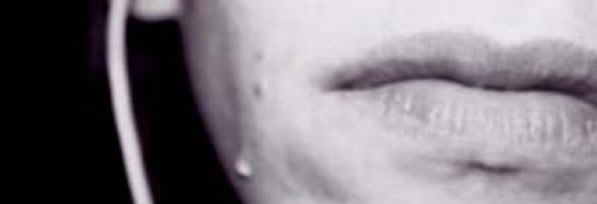What schizophrenia is and who it hits
Schizophrenia is the most serious known mental disorder: it entails invasive disorders in the emotional, cognitive and relational realms. 1.1% of the global population suffers from it (the corpus includes individuals from the age of eighteen), and it has a multifactorial origin: genetic factors play an important role, as there is a high overlapping of affected monozygotic twins, that goes from 30% to 40%. There is also an environmental factor at play, that comes from the family and highly disturbed relations with the parents. However, as it occurs with the most part of psychologic and psychiatric disorders, the causes can be multiple and they vary based on the subject’s personality, the environment in which they live: all these factors influence and interact with each other.

How to recognize schizophrenia and its symptoms (diagnosis)
According to the psychiatric classification of the Diagnostic and Statistical Manual of Mental Disorders, fifth edition (DSM – V), schizophrenia is part of the spectrum of disorders of schizophrenic nature and other psychotic disorders. It’s a severe condition that characterized by disturbances in thought, perception and behavior. A subject is affected by schizophrenic disorder when, within a month, they have exhibited at least two of the following symptoms: delusions, hallucinations, disorganized speech, grossly disorganized or catatonic behavior, negative symptoms (such as diminished emotional expression). A brief explanation of the meaning of this criteria will help to understand this dangerous psychic disorder.

Photograph by Bgphotographyllc
Schizophrenia and delusions
A delusion is an odd thought, a belief that is absurd and deviates completely from normality. For instance, the delusion of omnipotence is the belief of having astounding powers or abilities, or of having a special connection with a divinity or of being Napoleon; persecutory delusion is the belief of being followed, despised, or threatened by someone. Although these delusions are often opposed and contradicted by the people who are close to individuals who suffer from schizophrenia, the patients tend to not change their mind and they persist in their convictions.
Schizophrenia and hallucinations
A hallucination is an erroneous perception of reality, which is why in psychopathological terms it’s defined as a “perception without an object”. In these cases, the subject perceives situations, things, or people that aren’t present in reality. Among the most frequent hallucinations there are visual hallucinations, which can entail seeing people that aren’t present in their visual field, or perceiving alien or divine presences. Another common type of hallucinations are auditory hallucinations, which can entail hearing one or more voices. Other less frequent hallucinations can be olfactory hallucinations, namely the erroneous perception of odors, usually unpleasant, tactile hallucinations.

Photo by Alexas_Fotos
Schizophrenia: disorganized speech and grossly disorganized (or catatonic) behavior
A subject that exhibits these symptoms behaves and speaks in ways that are incongruous, illogical and difficult to understand for the people around them (unless they’re schizophrenic too!). A schizophrenic subject is incoherent and incapable of formulating logical and reasonable thoughts, incapable of focusing and of formulating consistent sentences.
Schizophrenia and negative symptoms
In this category, there is a series of shortages the subject has compared to so-called sane people: schizophrenics seem devoid of feelings for other people, and incapable of formulating thoughts. They are emotionally dull, unable to feel pleasure or fun, profoundly apathetic. These symptoms can be confusing and easily mistaken with depression: in order to distinguish these two conditions we must remember that schizophrenia requires the presence of two symptoms and therefore, other than the “negative” symptom, there must also be one of the characteristics above (delusions, hallucinations, disorganized speech and grossly disorganized behavior), which are not present in an actual depressive syndrome.
How to cure schizophrenia
Schizophrenia is a complex disorder that needs support on various angles: it is fundamental that a psychiatrist diagnoses it and that they prescribe the right medications for the subject’s condition. In many cases in schizophrenia it’s also best to intervene on a psychosocial level by trying to stimulate the patient to socialize and communicate. Attending day care centers, sport centers, or engaging in creative and recreational activities can be very helpful. In various situations, in order to contain the patient during the more severe phases, going for treatment at the hospital might be the best option: a brief hospitalization with the administration of the right medications (antipsychotics and sedatives), would be a moment for the patient to recollect themselves and it can make for a safe space in which the patient is under medications and therefore cannot harm themselves or other people. Naturally, the hospitalization needs to be as brief as possible, as its function is to give the patient the right stimulation to return to their own life; what’s more, psychiatric hospitals no longer exist in Italy, so these patients cannot stay for longer than a few days in the hospital or mental institution.
It’s very important to distinguish schizophrenia from depression, which is a mood disorder.

Photograph by Engin Akyurt
Works cited
Gabbard G. O. (2016) Psychodynamic Psychiatry in Clinical Practice, Fifth Edition, CBS Publishers & distributors
American Psychiatric Association (2013) Diagnostic and Statistical Manual of Mental Disorders (5th ed.). Washington, DC: Author.
Migone P. (2012) “Storia della schizofrenia”, taken from Il ruolo terapeutico, which can be found clicking here: http://www.psychomedia.it/pm/modther/probpsiter/ruoloter/rt119-120_12.htm
Translation: Marina Traylor






